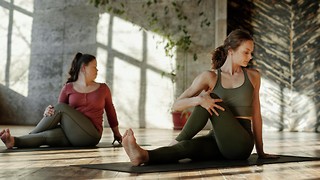From Cindies to Tokyo: dark clouds and natural disasters
In this week’s column, Anna Hollingsworth explores how natural disasters are ingrained into Japanese life

All the times I’ve worked with Japanese summer school students coming to Cambridge, we’ve welcomed them with tea, sandwiches, cookies, and muffins; this is later followed by activities such as afternoon tea in Grantchester, formal, more afternoon tea, more formals – you get idea (and yes, free food may well have been the – uhm, one – of the reasons I’ve done the job in the first place).
But things get a bit different when a Cambridge student like me is shipped off to Tokyo: after my first few weeks here, our language class was sent into a rather majesteically named Life Safety Training Centre. With a group of elementary school children, we sat through a documentary detailing minute by minute how the earthquake and tsunami of 2011 wreaked havoc; we ran through a dark smoke maze; we got thrown into a torrential rain simulator; and we got hit by fake furniture falling onto us in an earthquake simulator.
There’s a logic to why our time is better spent in army-like conditions (for someone who finds it hard walking five minutes to Spoons, it was like Sandhurst) than in tea parties. As the narrator pointed out at the end of the documentary, there is a 70 per cent chance of a magnitude 7.0 earthquake occurring in and around Tokyo within a 30-year period, projected to kill up to 23,000 people. The country is not only at a high risk of earthquakes and tsunamis (which, the linguist in me would like to point out, is a loanword from Japanese), but also erupting volcanos, typhoons, floods, and mudslides.
The silver lining to the admittedly rather major dark cloud of living in an apocalyptically disaster-prone area is that if one is to experience a major earthquake, Japan is probably your best bet for optimal chances of survival. There is a lot more to disaster prep than sending school children and foreign students alike to learning centres; not surprisingly, Japan is the leader in engineering earthquake-proof structures, with everything from Teflon foundation pads isolating buildings from the ground to fluid-filled shock absorbers shloshing thick oil in the opposite direction of any swaying on the market.
All new buildings shorter than three stories must have reinforced walls and foundation slabs; perhaps safety brought by these is excuse enough for the otherwise dubious aesthetics of Japanese housing architecture. Look up, and you may see modern skyscrapers swaying in the wind; the ship-at-stormy-seas effect is perhaps not ideal, but in the event of an earthquake these buildings can lurch 10 or more feet in one direction without snapping – shelves tipping over and stationery running across the floor seem like minor problems compared with your office block being cut into two.
At the forefront of earthquake-proof innovation, textile firm Komatsu Seiren is turning to carbon-fibre ropes instead of good ol’ steel and concrete: the company’s new showroom is covered by 1,031 carbon-fibre rods that prevent the building from jolting about too much, with 2,778 of the same rods inside for added stability. I’ve always preferred my buildings not to look like they’ve been stuffed into lace tights, but I guess the overall effect could qualify as postmodern art.
I’d like to think that the nation is as prepped as it can be for anything, but there is one big ‘but’ in the form of nuclear catastrophe. Fukushima Daiichi is the name of the nuclear power plant damaged in the 2011 earthquake, which resulted in evacuation of tens of thousands of residents. In our educational video, for example, there was a map showing fires that started out in the aftermath of the earthquake, but Fukushima was simply omitted from the map. With authorities having admitted that lax standards and poor oversight contributed to disaster, Fukushima stands for a national loss of face, and therefore for major hush hush. With the former PM Junichiro Koizumi claiming that his successor Jun Abe was lying when he said that the situation at Fukushima Daiichi was under control back in 2013 just before Tokyo was awarded the Olympic Games, I can only hope that the discussion will open up a bit.
Even after my training, I can’t say I’m quite culturally assimilated to the natural disaster aspect of Japanese life, and I doubt I would behave as calmly as the school children seen in the footage after the 2011 earthquake, walking calmly as crocodiles to muster points in their (very kawaii) protective helmets. But I am gaining some natural disaster immunity: I’ve slept through one minor earthquake, only to be confused as to what others were going on about at breakfast the following morning.
I thought another earthquake was just a drill, somehow missing out on any swaying. I’ve even walked to my gym in a typhoon, blissfully enjoying the emptiness of the usually busy gym, and only realising that the rain and wind were something out of ordinary when I got back and saw my inbox full of emails forbidding anyone to leave the house. Oh well, at that point it was time for my afternoon tea anyway
 News / ‘Out of the Ordinary’ festival takes over Cambridge 26 August 2025
News / ‘Out of the Ordinary’ festival takes over Cambridge 26 August 2025 News / Government pulls £277M in funding for Cambridge sewage works relocation25 August 2025
News / Government pulls £277M in funding for Cambridge sewage works relocation25 August 2025 News / Tompkins Table 2025: Trinity widens gap on Christ’s19 August 2025
News / Tompkins Table 2025: Trinity widens gap on Christ’s19 August 2025 Comment / Who could possibly want more exams?25 August 2025
Comment / Who could possibly want more exams?25 August 2025 News / News in Brief: Brain breakthroughs, bouldering, and the ‘broligarchy’24 August 2025
News / News in Brief: Brain breakthroughs, bouldering, and the ‘broligarchy’24 August 2025









